
How to Use SHT31: Examples, Pinouts, and Specs
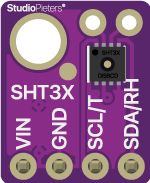
 Design with SHT31 in Cirkit Designer
Design with SHT31 in Cirkit DesignerIntroduction
The SHT31, manufactured by Sensirion, is a digital humidity and temperature sensor designed to deliver highly accurate measurements of relative humidity and temperature. It features a high level of precision, low power consumption, and a fast response time. The SHT31 is equipped with a digital I²C interface, making it easy to integrate into a wide range of applications.
Explore Projects Built with SHT31
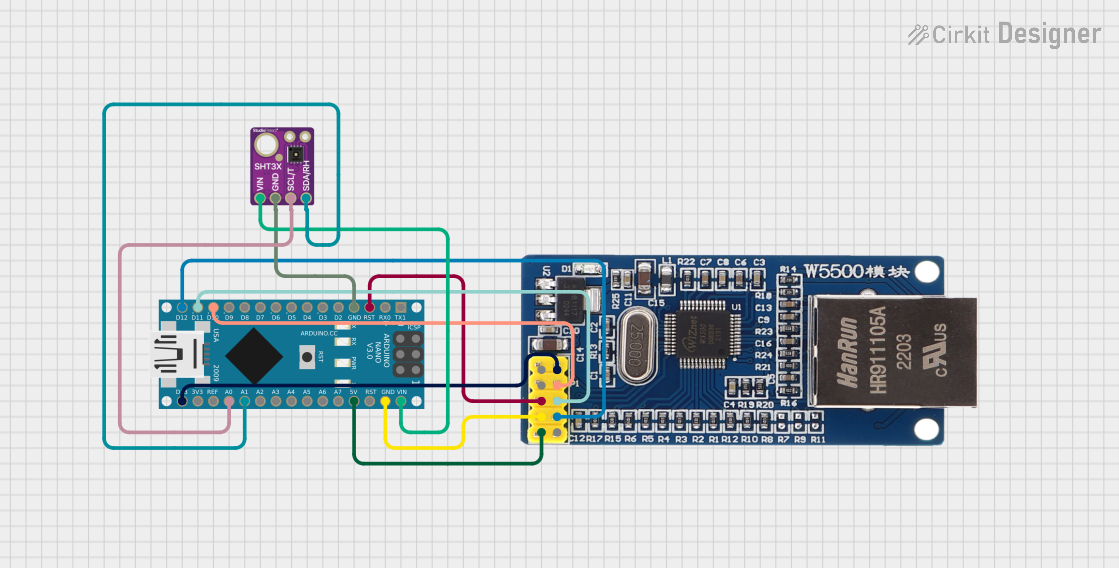
 Open Project in Cirkit Designer
Open Project in Cirkit Designer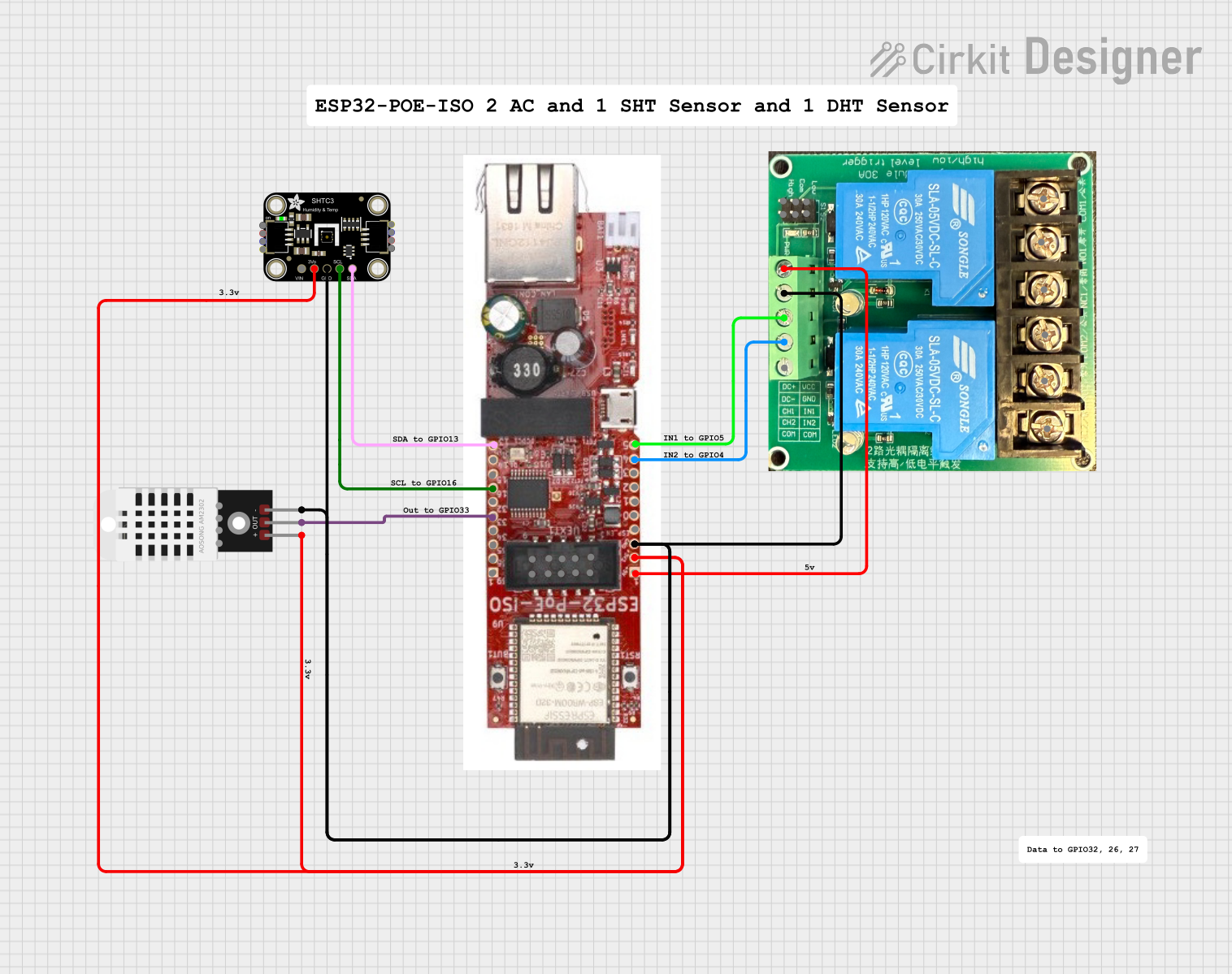
 Open Project in Cirkit Designer
Open Project in Cirkit Designer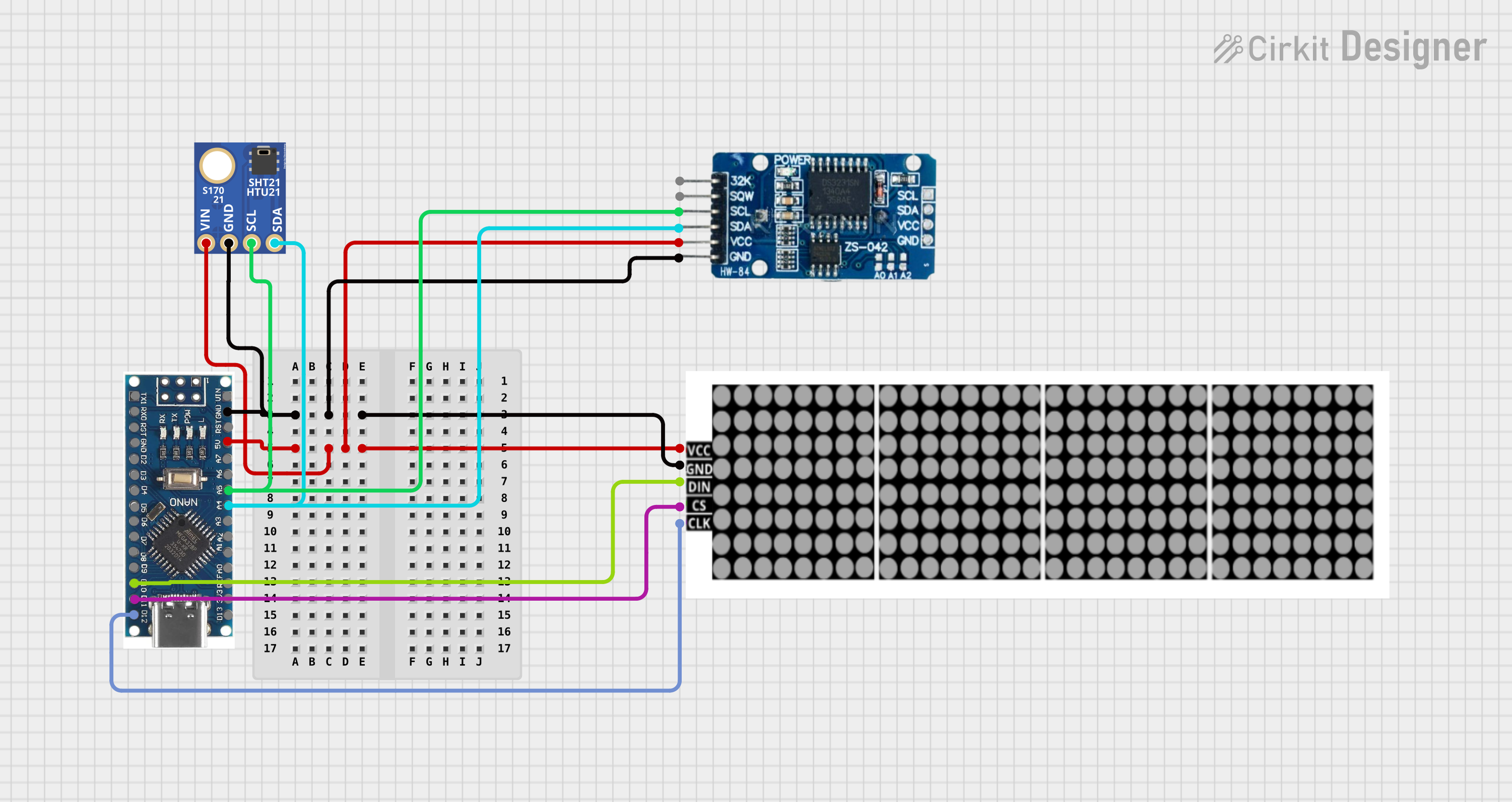
 Open Project in Cirkit Designer
Open Project in Cirkit Designer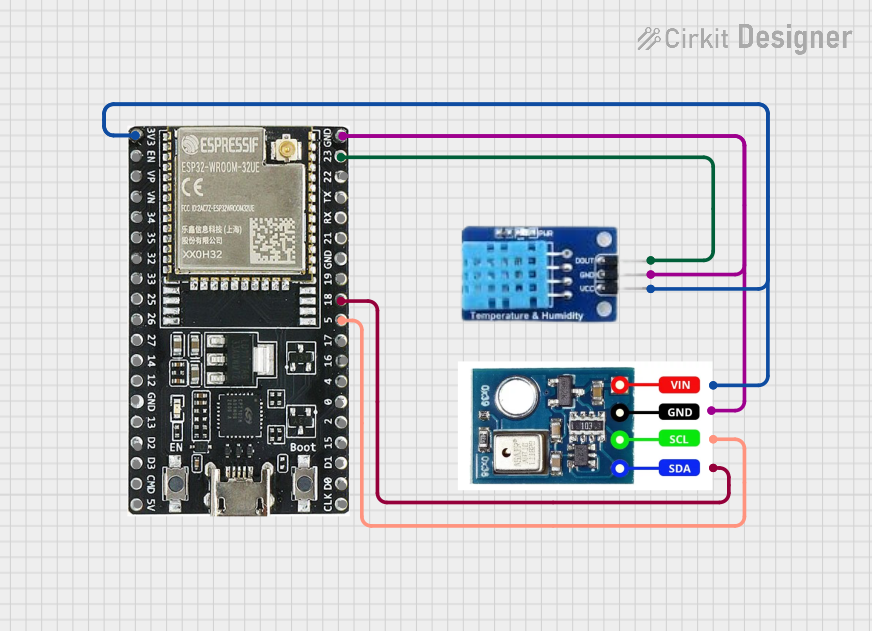
 Open Project in Cirkit Designer
Open Project in Cirkit DesignerExplore Projects Built with SHT31

 Open Project in Cirkit Designer
Open Project in Cirkit Designer
 Open Project in Cirkit Designer
Open Project in Cirkit Designer
 Open Project in Cirkit Designer
Open Project in Cirkit Designer
 Open Project in Cirkit Designer
Open Project in Cirkit DesignerCommon Applications
- Weather stations
- HVAC (Heating, Ventilation, and Air Conditioning) systems
- Environmental monitoring
- Industrial process control
- Smart home devices
- Data loggers
Technical Specifications
The SHT31 sensor is designed to provide reliable and precise measurements under various environmental conditions. Below are its key technical details:
Key Specifications
| Parameter | Value |
|---|---|
| Supply Voltage (VDD) | 2.4V to 5.5V |
| Average Current Consumption | 2 µA (standby), 150 µA (active) |
| Humidity Measurement Range | 0% to 100% RH |
| Humidity Accuracy | ±2% RH (typical) |
| Temperature Measurement Range | -40°C to +125°C |
| Temperature Accuracy | ±0.3°C (typical) |
| Communication Interface | I²C (up to 1 MHz) |
| Response Time (τ63%) | 8 seconds (typical) |
| Dimensions | 2.5 mm x 2.5 mm x 0.9 mm |
Pin Configuration
The SHT31 is typically available in a 4-pin package. Below is the pinout description:
| Pin Number | Pin Name | Description |
|---|---|---|
| 1 | VDD | Power supply (2.4V to 5.5V) |
| 2 | GND | Ground |
| 3 | SDA | Serial Data Line for I²C communication |
| 4 | SCL | Serial Clock Line for I²C communication |
Usage Instructions
The SHT31 is straightforward to use in a circuit, thanks to its I²C interface. Below are the steps and considerations for integrating the sensor:
Circuit Connection
- Connect the VDD pin to a 3.3V or 5V power supply.
- Connect the GND pin to the ground of your circuit.
- Connect the SDA pin to the I²C data line of your microcontroller (e.g., Arduino UNO).
- Connect the SCL pin to the I²C clock line of your microcontroller.
- Use pull-up resistors (typically 4.7 kΩ) on the SDA and SCL lines if not already present.
Example Code for Arduino UNO
Below is an example Arduino sketch to read temperature and humidity data from the SHT31 sensor using the Adafruit SHT31 library:
#include <Wire.h>
#include "Adafruit_SHT31.h"
// Create an instance of the SHT31 sensor
Adafruit_SHT31 sht31 = Adafruit_SHT31();
void setup() {
Serial.begin(9600); // Initialize serial communication
while (!Serial) delay(10); // Wait for serial monitor to open
// Initialize the SHT31 sensor
if (!sht31.begin(0x44)) { // 0x44 is the default I²C address
Serial.println("Failed to find SHT31 sensor!");
while (1) delay(1); // Halt execution if sensor is not found
}
Serial.println("SHT31 sensor initialized.");
}
void loop() {
// Read temperature and humidity
float temperature = sht31.readTemperature();
float humidity = sht31.readHumidity();
// Check if readings are valid
if (!isnan(temperature) && !isnan(humidity)) {
Serial.print("Temperature: ");
Serial.print(temperature);
Serial.println(" °C");
Serial.print("Humidity: ");
Serial.print(humidity);
Serial.println(" %");
} else {
Serial.println("Failed to read data from SHT31 sensor.");
}
delay(2000); // Wait 2 seconds before the next reading
}
Best Practices
- Use decoupling capacitors (e.g., 0.1 µF) near the VDD pin to stabilize the power supply.
- Avoid exposing the sensor to extreme conditions (e.g., condensation, dust) to maintain accuracy.
- Calibrate the sensor if required for high-precision applications.
- Ensure proper pull-up resistors are used on the I²C lines to avoid communication issues.
Troubleshooting and FAQs
Common Issues and Solutions
Sensor Not Detected on I²C Bus
- Ensure the correct I²C address (default: 0x44) is used in your code.
- Verify the SDA and SCL connections and check for proper pull-up resistors.
- Confirm that the power supply voltage is within the specified range (2.4V to 5.5V).
Incorrect or Unstable Readings
- Check for noise or instability in the power supply. Use decoupling capacitors if needed.
- Ensure the sensor is not exposed to condensation or contaminants.
- Verify that the sensor is not placed near heat sources or strong airflow.
Arduino Code Compilation Errors
- Ensure the Adafruit SHT31 library is installed in the Arduino IDE.
- Verify that the correct board and port are selected in the Arduino IDE.
FAQs
Q: Can the SHT31 operate at 5V?
A: Yes, the SHT31 can operate with a supply voltage between 2.4V and 5.5V, making it compatible with both 3.3V and 5V systems.
Q: What is the default I²C address of the SHT31?
A: The default I²C address is 0x44. Some variants of the sensor may support an alternate address of 0x45.
Q: How can I protect the sensor in harsh environments?
A: Use a protective cover or filter to shield the sensor from dust, water, and other contaminants while allowing air to pass through.
Q: Can the SHT31 measure dew point?
A: The SHT31 does not directly measure dew point, but you can calculate it using the temperature and humidity readings.
By following this documentation, you can effectively integrate and use the SHT31 sensor in your projects.